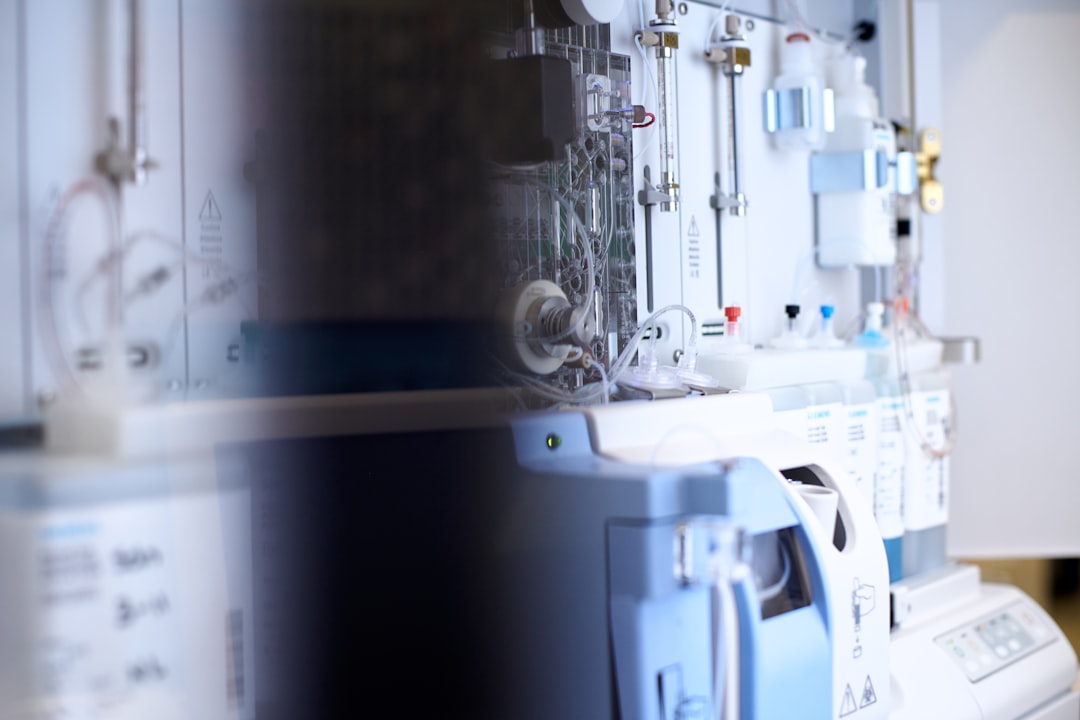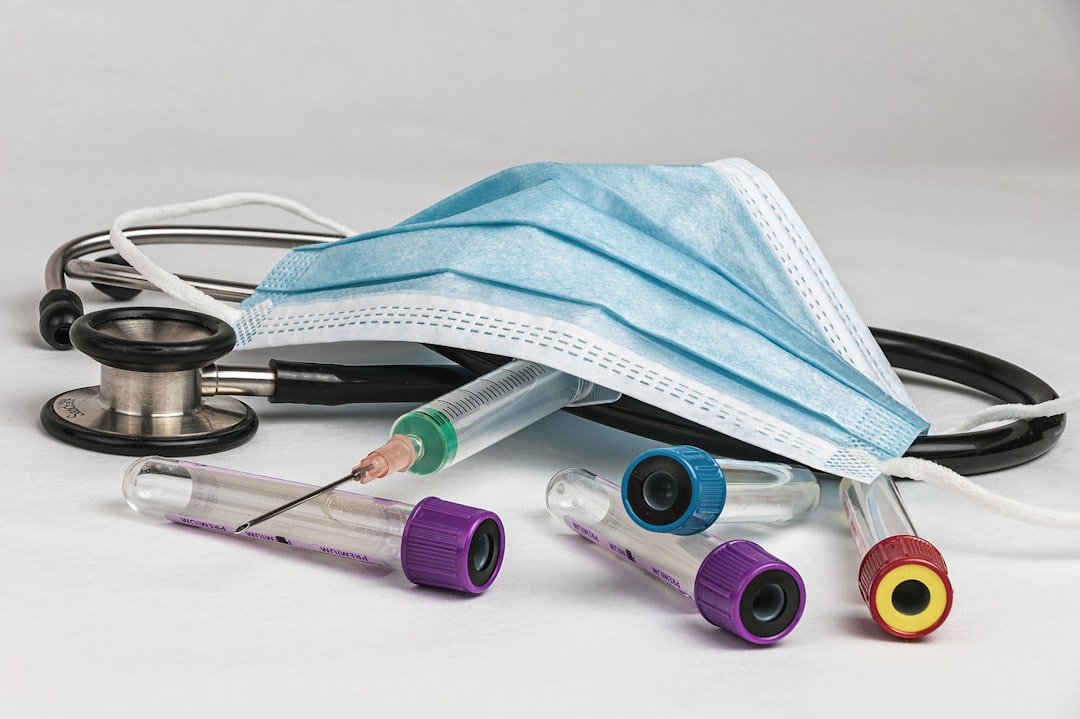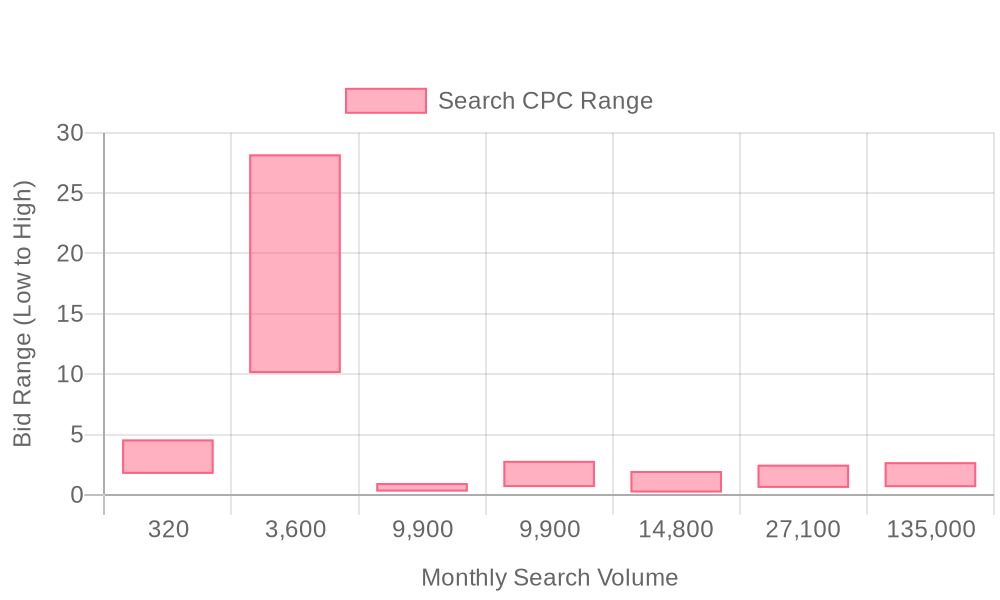
Supercharge your lead generation with a FREE Google Ads audit - no strings attached! See how you can generate more and higher quality leads
Get My Free Google Ads AuditFree consultation

No commitment
Supercharge your lead generation with a FREE Google Ads audit - no strings attached! See how you can generate more and higher quality leads
Get My Free Google Ads AuditFree consultation

No commitment
In the evolving landscape of digital marketing, healthcare advertising demands a nuanced approach. Leveraging Google Ads for Health Devices effectively requires understanding unique compliance challenges and optimizing campaigns for maximum reach. This guide offers tech-savvy professionals and entrepreneurs solutions that align with modern networking and branding strategies while integrating seamlessly into existing marketing efforts. For companies in the health device sector, harnessing Google Ads means capturing high-intent consumers seeking innovative solutions at pivotal moments, ultimately bridging the gap between online engagement and offline conversions.

Digital-first health device companies are redefining their lead generation strategies by prioritizing high-intent targeting, compliance, and measurable outcomes. Effective B2B medical device marketing now leverages Google Ads for Health Devices to connect with decision-makers at every stage of the buying journey, ensuring that every ad dollar is accountable and performance-driven.
Integrating Google Ads into your health device marketing mix requires more than setting up campaigns—it demands a data-driven foundation that aligns with strict healthcare advertising regulations and buyer intent. The following framework outlines how to execute search and display advertising with precision, delivering valuable leads through actionable, compliant tactics. For additional strategies and expert insights, explore our B2B marketing guides.
In highly competitive medical device advertising environments, the difference between missed and captured opportunities often hinges on the ability to identify, engage, and convert high-value prospects before the competition. By leveraging dynamic audience syncs, unified CRM attribution, and data-driven keyword selection, health device marketers can ensure that every Google Ads investment translates directly into measurable growth and market advantage. If you’re ready to put these strategies into action, get started for free with Sona and unlock the tools needed for compliant, high-impact health device lead generation.

Health device marketing demands precision, tight compliance, and fast response to evolving market needs. Digital-first buyers, from procurement directors to clinical decision-makers, search for solutions at critical moments—making Google Ads a vital lever for immediate, high-intent engagement. For strategic tips on optimizing your campaigns, explore this guide to Google Ads best practices for healthcare.
Decision-makers in medical device marketing benefit from advanced visitor identification, revealing which healthcare organizations are engaging before form submissions occur. Real-time audience scoring updates campaign priorities as high-intent leads move through the funnel, so teams can focus spend on accounts most likely to convert. This level of digital marketing for healthcare ensures that every dollar works harder—supporting compliance, accelerating sales cycles, and driving measurable growth for health device providers. To see these insights in action, get started for free with Sona.

Modern medical device marketers navigate a highly regulated environment that demands both precision and adaptability at every funnel stage. Strategic use of Google Ads for Health Devices ensures that compliance is met without sacrificing campaign effectiveness or ROI. For further guidance on maintaining regulatory standards, see this overview of Google Ads and HIPAA compliance.
The healthcare sector often struggles with generic campaigns that overlook the nuanced needs of healthcare professionals and institutional buyers. Leading teams now leverage segmentation and dynamic audience building to craft messaging that aligns with distinct market segments, moving beyond basic demographic targeting to firmographic and behavioral signals.
Segmenting campaigns by vertical, company size, or buying stage eliminates wasted spend and allows for hyper-personalized outreach that resonates with each unique market segment. When medical device advertisers unify their go-to-market data, they gain full visibility into which campaign types and tactics generate the highest engagement, enabling a continuous optimization cycle and maximizing healthcare PPC results. To see how you can apply these strategies, get started for free with Sona.
B2B revenue teams in health device markets can uncover growth opportunities by combining market intelligence with advanced digital tools. The most effective strategies rely on leveraging both competitor insights and AI-driven data to identify buyer intent across the funnel.
Without predictive analytics, it is nearly impossible to separate casual researchers from in-market buyers. AI-powered predictive scoring models now enable marketers to focus ad budgets on accounts exhibiting clear buying signals, such as repeated site visits or engagement with clinical efficacy content. Teams that sync enriched lead and account data into Google Ads and connected CRMs maximize the impact of each campaign, ensuring marketing and sales stay aligned on high-value health product advertising opportunities. To see how advanced audience and intent tools can drive your pipeline, get started for free with Sona.
Effective audience segmentation is the cornerstone of high-performing medical device advertising. By narrowing your targeting to the most relevant healthcare organizations and decision-makers, you reduce wasted spend and increase your ability to deliver precisely tailored messages. For health device marketers, this approach is vital in a landscape where compliance, personalization, and measurable outcomes define campaign success. To deepen your understanding of medical device ad restrictions, review this summary of common Google Ads restrictions for medical devices.
Disconnected intent signals and generic audience definitions can erode conversion rates and limit ROI. By unifying audience data, intent insights, and CRM records, marketers in the medical device sector can orchestrate seamless, cross-channel campaigns. This holistic approach delivers consistent, compliant messaging across all digital touchpoints, ensuring visibility among key healthcare buyers while maintaining Google Ads compliance at every stage. Ready to put these strategies into practice? Get started for free with Sona.

| Industry | Keyword | Monthly Search Volume | Competition Level | Low Bid | High Bid |
| Health Devices | health devices | 320 | HIGH | 1.74 | 4.59 |
| Health Devices | medical alert systems for seniors | 3600 | HIGH | 10.09 | 28.21 |
| Health Devices | blood pressure watch | 9900 | HIGH | 0.28 | 0.98 |
| Health Devices | most accurate blood pressure monitor | 9900 | HIGH | 0.65 | 2.82 |
| Health Devices | fitness trackers | 14800 | HIGH | 0.2 | 1.98 |
| Health Devices | blood pressure machine | 27100 | HIGH | 0.58 | 2.5 |
| Health Devices | blood pressure monitor | 135000 | HIGH | 0.64 | 2.71 |
A robust keyword strategy anchors successful digital marketing for healthcare, especially in highly regulated spaces like health device advertising. Precision in keyword selection ensures campaigns reach qualified audiences actively searching for compliant medical device solutions, driving both discoverability and lead quality. For more insights on optimizing campaigns in this sector, explore the Sona blog.
Effective strategies blend high-intent, compliance-aligned keywords with negative keyword filters to exclude high-risk terms. This dual approach reduces wasted spend and prevents ad disapprovals due to non-compliant queries, a critical step in navigating healthcare PPC. Marketers can review healthcare ad restrictions for additional best practices and policy considerations.
Advanced platforms empower marketers to pinpoint which companies and professionals are behind search queries, moving beyond anonymous traffic. By identifying these visitors, advertisers can focus budget on accounts demonstrating genuine in-market activity for health devices by leveraging Sona Identification. Real-time intent signals surface which prospects are actively researching, enabling dynamic budget allocation toward high-converting segments with Sona Intent Signals.
Optimizing keyword lists involves continuous monitoring of search term reports, competitor benchmarking, and regular updates based on new product launches or regulatory shifts. Integrating CRM and ad platforms ensures that enriched audience segments—such as healthcare providers or hospital procurement teams—are synced directly into campaign targeting. This unification produces dynamic audiences that evolve as leads progress through the funnel, maintaining relevance and maximizing campaign ROI.
Sample target terms for Google Ads for Health Devices include:
By leveraging these strategies, health device marketers create campaigns that not only comply with stringent advertising policies but also capture the highest quality leads, supporting scalable growth in a complex regulatory environment. Ready to elevate your healthcare ad targeting? Get started for free with Sona.
The landscape of Google Ads for Health Devices is shaped by continuous regulatory changes, complex buyer journeys, and a fragmented digital ecosystem. Delivering consistent, compliant messaging to the right healthcare professionals or purchasing teams demands a framework that is both precise and adaptive. For a deeper dive into evolving ad restrictions and compliance in this sector, see this overview of healthcare ad restrictions and best practices.
This step-by-step execution approach empowers B2B revenue teams to maximize their digital marketing for healthcare investments. By integrating unified data, audience insights, and rigorous optimization, marketers can accelerate qualified pipeline generation while maintaining strict Google Ads compliance. Explore additional strategies for maximizing healthcare digital marketing ROI.
Curating keyword lists tailored by device category, clinical application, and geography is foundational for effective healthcare PPC. Health device marketers need to map high-intent, compliant search terms to decision-maker pain points, such as “FDA-cleared cardiac monitoring device” or “hospital-grade ventilators.” Layering in geo-modifiers and medical terminology ensures relevance and adherence to policy restrictions, while negative keywords proactively filter out non-compliant or low-value traffic.
Unified data platforms streamline this process by consolidating intent signals from CRM, previous campaigns, and third-party research. Marketers can pinpoint the real organizations searching for health product advertising solutions, increasing the efficiency of every dollar spent.
Ad copy in medical device advertising must balance regulatory precision with trust-building language. Headlines should highlight clinical benefits, regulatory approvals, and intended use cases, steering clear of prohibited claims or unsubstantiated guarantees. For example, using “Supports clinician workflow” instead of “Cures chronic conditions” aligns with Google Ads compliance guidelines and builds credibility with healthcare buyers.
Real-time audience insights allow teams to tailor messaging dynamically as new clinical needs or regulatory updates emerge. By identifying which companies or accounts are actively researching specific device types, marketers can refine their ad copy to address urgent procurement challenges or highlight newly approved features, increasing relevance and engagement.
Landing pages for medical technology campaigns require clarity, trust signals, and frictionless calls to action. Compliance is reinforced through transparent disclosures, device classifications, and regional certifications visible above the fold. Conversion elements—such as demo requests or whitepaper downloads—should align with each buyer stage, from early research to final vendor selection.
Enriched visitor data enables tailored experiences for each segment. For instance, hospital procurement teams can see case studies relevant to their region or specialty, while clinicians are guided to evidence summaries or technical validations, improving both conversion rates and sales qualification quality.
Healthcare digital strategy demands relentless optimization, leveraging both quantitative and qualitative feedback. A/B testing of headlines, landing page layouts, and calls to action surfaces the highest-performing combinations, while granular analysis of conversion paths reveals bottlenecks or compliance risks.
Integrating advanced attribution connects every Google Ads touchpoint—online or offline—with CRM outcomes. Dynamic audience management ensures that as leads demonstrate new buying signals or move through the funnel, they are automatically prioritized for retargeting, exclusion, or tailored messaging. This not only boosts ROI but also aligns every campaign with evolving regulatory and market realities, allowing revenue teams to focus efforts where pipeline impact is greatest. To start building compliant, conversion-ready campaigns, get started for free with Sona.
Maximizing your health device company’s digital footprint demands sharp coordination between awareness and acquisition. Precision in campaign structure and messaging can unlock market segments that traditional outreach methods often miss. Explore actionable strategies for account-based marketing to further refine your targeting and streamline acquisition efforts.
A harmonious integration of sales and marketing signals ensures each ad message resonates with the precise needs of buyers at every stage. As marketing data syncs seamlessly with sales workflows, teams gain a unified view of which campaigns drive pipeline impact, enabling ongoing optimization for superior ROI. Get started for free with Sona.
Effectively marketing health devices through Google Ads can be a game-changer for your business. By navigating compliance requirements and leveraging the power of targeted advertising, you can reach the right audience and drive meaningful engagement. Understanding the nuances of this platform is essential for maximizing your return on investment while ensuring you meet industry standards.
Throughout this discussion, we've explored the challenges and solutions involved in using Google Ads for health-related products. We’ve delved into the importance of understanding compliance regulations, crafting compelling ad content, and utilizing data-driven insights to optimize your campaigns. These strategies can help you not only maintain compliance but also enhance your visibility and impact in a competitive market.
Imagine the possibilities when you can harness the full potential of Google Ads to elevate your brand and connect with consumers who genuinely benefit from your health devices. By implementing these strategies, you’re not just advertising; you’re creating opportunities for growth and transformation. Take the first step toward realizing this potential, and let these insights guide you to success.
Ready to put these strategies into action? Start for free to experience our platform and its capabilities today. Empower your marketing efforts with data-driven insights and achieve the results you've been aiming for.
Google Ads policies for health devices require compliance with strict legal requirements, including customization by region or certification status to reduce risk and avoid account suspensions.
Creating compliant Google Ads for medical devices involves ensuring ad copy highlights clinical benefits and regulatory approvals, without making prohibited claims or unsubstantiated guarantees.
To optimize Google Ads for health products, use a data-driven keyword strategy, targeted audience segmentation, and conversion-focused landing pages, while integrating CRM and real-time intent data.
Common restrictions include aligning each impression and click with evolving compliance standards and avoiding non-compliant queries to prevent ad disapprovals.
To apply for healthcare-related advertising, ensure your campaigns are compliant with Google Ads healthcare policy and integrate compliance measures into your ad copy and landing pages.
Join results-focused teams combining Sona Platform automation with advanced Google Ads strategies to scale lead generation

Connect your existing CRM

Free Account Enrichment

No setup fees
No commitment required

Free consultation

Get a custom Google Ads roadmap for your business
Join results-focused teams using Sona Platform automation to activate unified sales and marketing data, maximize ROI on marketing investments, and drive measurable growth

Connect your existing CRM

Free Account Enrichment

No setup fees
No commitment required

Free consultation

Get a custom Google Ads roadmap for your business
Over 500+ auto detailing businesses trust our platform to grow their revenue
Join results-focused teams using Sona Platform automation to activate unified sales and marketing data, maximize ROI on marketing investments, and drive measurable growth

Connect your existing CRM

Free Account Enrichment

No setup fees
No commitment required

Free consultation

Get a custom Google Ads roadmap for your business
Over 500+ auto detailing businesses trust our platform to grow their revenue
Join results-focused teams using Sona Platform automation to activate unified sales and marketing data, maximize ROI on marketing investments, and drive measurable growth

Connect your existing CRM

Free Account Enrichment

No setup fees
No commitment required

Free consultation

Get a custom Google Ads roadmap for your business
Over 500+ auto detailing businesses trust our platform to grow their revenue
Join results-focused teams using Sona Platform automation to activate unified sales and marketing data, maximize ROI on marketing investments, and drive measurable growth

Connect your existing CRM

Free Account Enrichment

No setup fees
No commitment required

Free consultation

Get a custom Google Ads roadmap for your business
Over 500+ auto detailing businesses trust our platform to grow their revenue
Our team of experts can implement your Google Ads campaigns, then show you how Sona helps you manage exceptional campaign performance and sales.
Schedule your FREE 15-minute strategy sessionOur team of experts can help improve your demand generation strategy, and can show you how advanced attribution and data activation can help you realize more opportunities and improve sales performance.
Schedule your FREE 30-minute strategy sessionOur team of experts can help improve your demand generation strategy, and can show you how advanced attribution and data activation can help you realize more opportunities and improve sales performance.
Schedule your FREE 30-minute strategy sessionOur team of experts can help improve your demand generation strategy, and can show you how advanced attribution and data activation can help you realize more opportunities and improve sales performance.
Schedule your FREE 30-minute strategy sessionOur team of experts can help improve your demand generation strategy, and can show you how advanced attribution and data activation can help you realize more opportunities and improve sales performance.
Schedule your FREE 30-minute strategy session





Launch campaigns that generate qualified leads in 30 days or less.
